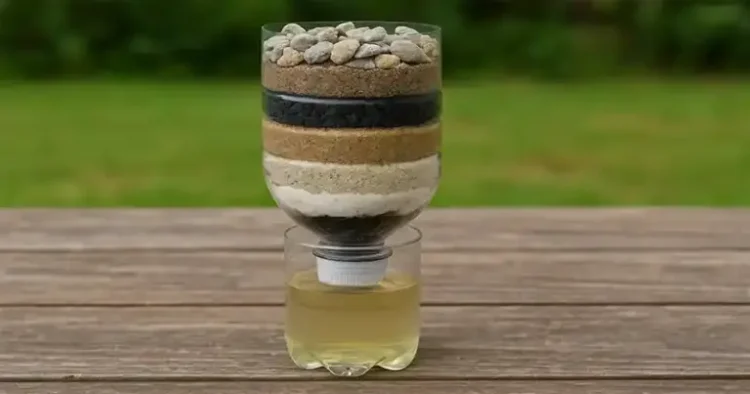When clean drinking water becomes hard to find—whether you’re camping deep in the wilderness, trekking far from civilization, or facing an unexpected emergency—a simple homemade water filter can make the difference between dehydration and survival. With just a few basic materials, you can turn murky, contaminated water into a much safer and more drinkable resource.
This guide will walk you through how to make an effective DIY water filter using items you can find almost anywhere. While it won’t match the performance of a professional filtration system, it can help provide cleaner water in urgent situations.
What You’ll Need
1 Plastic bottle (medium size recommended)
Sharp knife or scissors
Soldering iron or heated metal rod (for making small holes)
Cotton (clean, unbleached if possible)
Charcoal (boiled and dried for safety)
Fine, clean sand
Clean gravel or small pebbles
Water container (to collect the filtered water)
Step-by-Step Instructions
1. Prepare the Bottle
Start with a clean plastic bottle. Wash it thoroughly inside and out to remove any dirt, residue, or odors. This ensures you’re not introducing more contaminants into your filtered water.
Cut the bottle in half. The top half will become the main filter body, and the bottom half will act as the container for your filtered water.
2. Create Filtration Holes
Use a soldering iron or heated metal rod to make three to five small holes in the bottle cap. These will allow filtered water to drip through. Make sure the holes are small enough to keep the filter layers in place but large enough to let water pass through slowly.
You can also add a few small holes along the sides of the bottle to help with air flow, which improves the filtration speed.
3. Build the Filtration Layers
The order and preparation of each layer is essential for an effective filter.
Bottom Layer – Cotton:
Place a layer of cotton directly above the cap holes. This works as the final guard, catching fine particles before water exits the filter. Press it down gently—firm enough to stay in place but loose enough to let water pass.
Second Layer – Charcoal:
Boil your charcoal beforehand to remove dust, impurities, and any harmful substances. Then crush it into small chunks—not powdery, but small enough to increase surface area. Charcoal absorbs impurities, odors, and chemicals from the water.
Third Layer – Clean Sand:
Add a layer of fine, clean sand. This traps smaller particles and helps water flow evenly through the filter.
see continuation on next page
